The African savannahs are well known for their rich diversity of wildlife such as lions, elephants, giraffes and zebras among many others. Among the many animals you will see walking the savannah is the striking secretary bird.
This long-legged, eagle-looking bird of prey is one of the biggest birds in Africa. With its crown of black feathers resembling a bundle of quills, the secretary bird is a great presence in the savannah that serves many important roles.
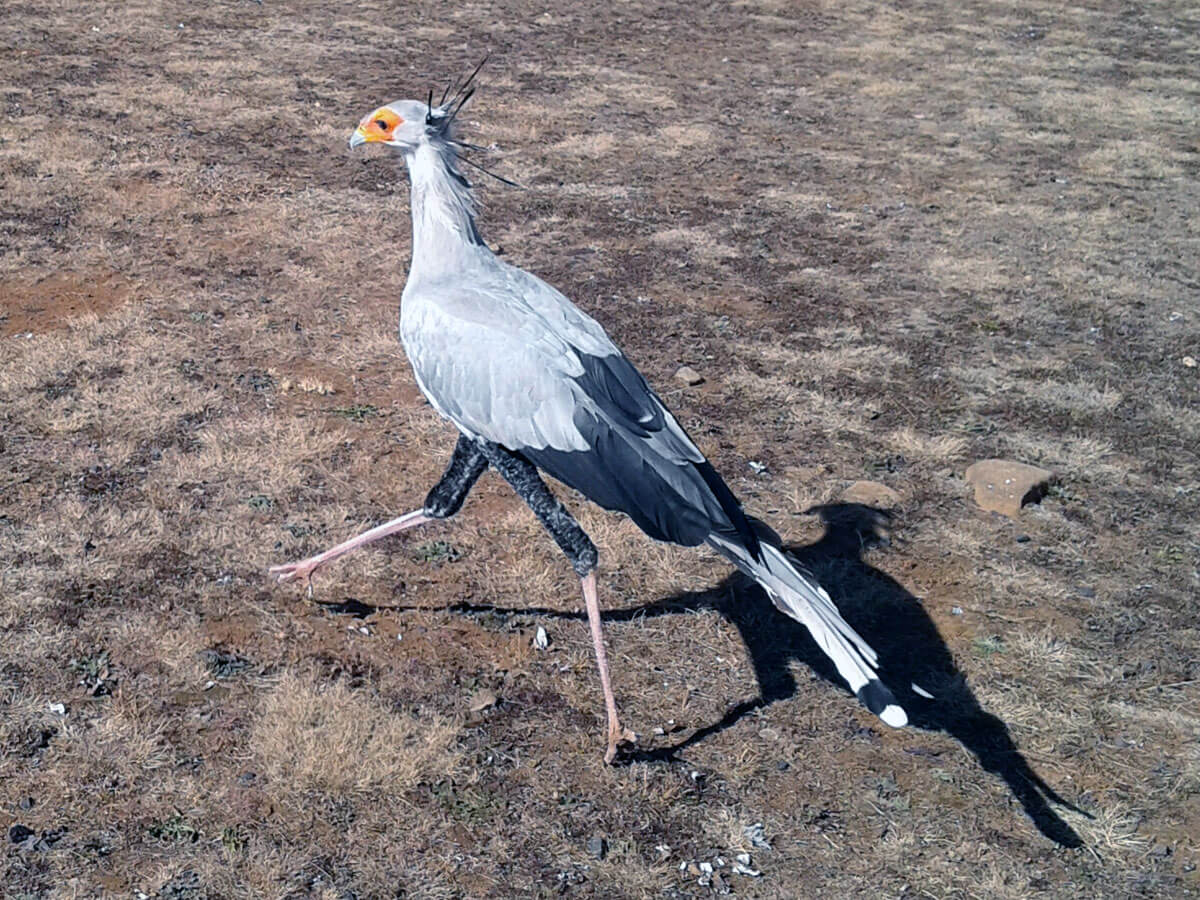
In this article, we take a look at the secretary bird and the various things that make it very interesting and important to the African wilderness. from how it hunts, to how it raises its young and its cultural significance in Africa.
Facts About The Secretary Bird
1. Appearance
The secretary bird is a very big bird that is easy to recognize. Its head and body resemble that of many other eagles but its long legs look like those of cranes.
Its eagle-like head has a sharp hooked bill and a crown of black feathers that resembles a bundle of quills – the very reason behind its name. The rest of its plumage is a blend of light and dark, typically a light grey body with contrasting black thighs and flight feathers.
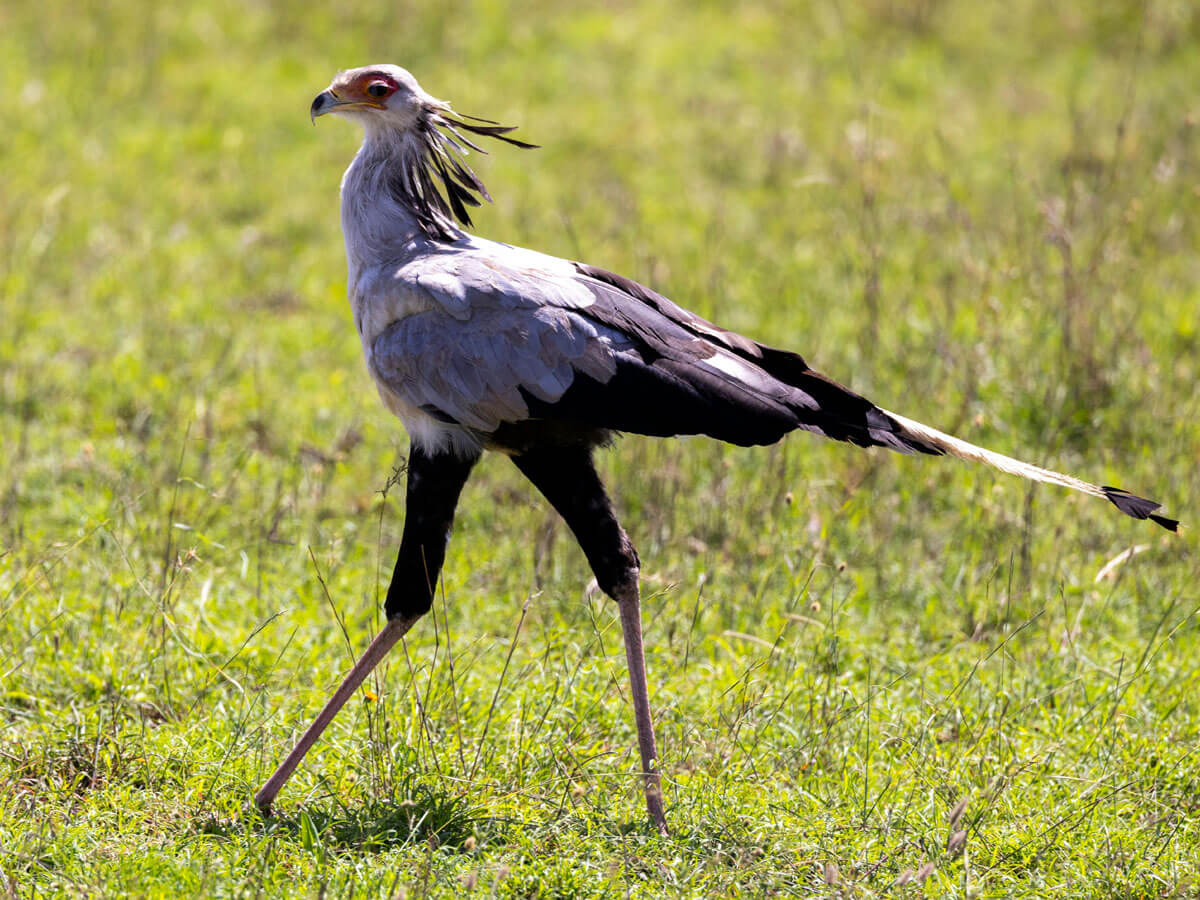
2. Size
Standing at an impressive height of around 1.3 meters (4 ft 3 in), the secretary bird is a giant amongst birds of prey. Its most remarkable feature, however, is its long legs, which can be almost as tall as its body! These powerful limbs are perfectly adapted for the secretary bird's unique terrestrial hunting style.
The secretary bird has a wingspan of around 2 metres (6.5 feet) and weighs an average of 4 kilograms (8.8 lb).
3. Name Origins
There are two main theories behind the secretary bird's name.
One suggests it comes from the resemblance of its head feathers to the quill pens secretaries used to tuck behind their ears in the past. However, a more likely explanation lies in its Arabic roots. The word "saqr-et-tair" translates to "hunter bird," a much more fitting title for this formidable raptor.
Despite looking like they might have a close biological relationship with cranes due to the long legs, secretary birds are closely related to birds such as kites, eagles and hawks.
4. Habitat
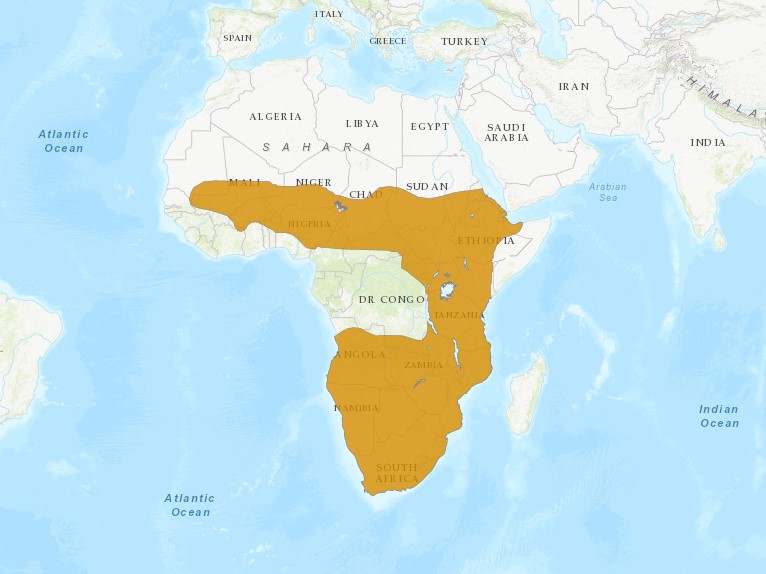
The secretary bird is only found in sub-Saharan Africa in open plains, grasslands and savannahs. They can be found in all countries south of the Sahara desert, and to South Africa.
The plains provide an ideal hunting ground where it can easily move around and hunt with ease unlike in forested areas.
Secretary birds are fewer in areas of grass taller than 1 meter (3.3 feet) since they wouldn't be able to easily see and hunt. They also avoid hotter and drier areas since the food resources are a bit more limited.
5. Hunting & Diet
Unlike most birds of prey that hunt from the sky and swoop down for a surprise attack, the secretary bird has mastered hunting on the ground - thanks to its long legs. Using its long legs, it can cover vast distances, patrolling its territory and searching for prey.

One of the secretary bird's most strange hunting techniques involves its powerful legs. It stomps on its prey to stun or immobilize it before delivering the final blow with its sharp beak.
The secretary bird has a diverse diet consisting of mainly snakes, rodents, insects, lizards and some birds or their eggs. Similar to the meerkats, the secretary bird also has a way of consuming venomous snakes and not getting poisoned by the venom.
This diversity of diet is what enables the secretary bird to easily live in most of Africa's plains and savannahs.
6. Breeding & Lifecycle
Secretary birds are monogamous birds, forming lifelong partnerships with their mates. They are territorial creatures, fiercely defending their vast hunting grounds from other predators.
During the breeding season, they engage in elaborate courtship displays involving soaring flights and synchronized calls. The nest is typically built high up in a tree, and the female lays no more than 3 eggs. The eggs hatch after 45 days and both parents take turns incubating the eggs and caring for the chicks after they hatch.
Similar to African Fish Eagles, sibling aggression is rare and the hatchlings can usually survive unless preyed on by other raptors. The young secretary birds take a while to mature, and parental care can last for several months.
At around 3 months old, the young secretary birds are old enough to leave their parents and venture out on their own.
In the wild, secretary birds have a lifespan of between 10 and 15 years, but they can live up to 19 years in a captive environment where threats are few and they receive food and care from humans.
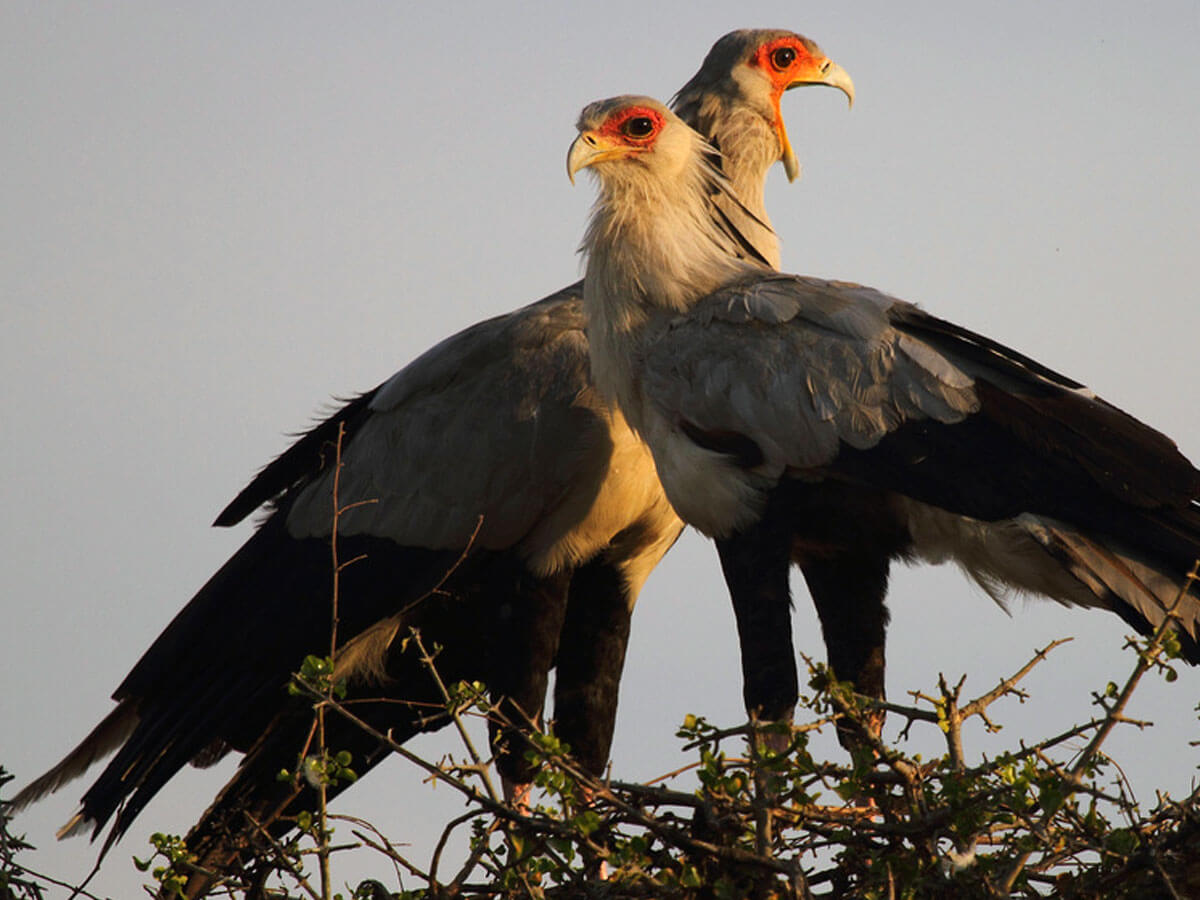
7. Role in the Ecosystem
Like most animals, the secretary bird is vital in ensuring the balance of a healthy wild ecosystem. By hunting and eating snakes, rodents and insects they are helping control the populations of those animals at a level where the savannahs don't become overrun with those species at the expense of other animals.
The killing of snakes is helpful for the other smaller animals like rodents, which would not survive an overpopulation of snakes.
8. Cultural Significance
The significance of the secretary bird can be traced back to ancient Egypt as depicted on an ivory knife dating back to 3200 BC. Currently, it appears as a national symbol on the coat of arms of South Africa and the emblem of Sudan.
In various communities, the secretary bird was admired for its ability to help with pests and snakes and was never really disturbed or negatively perceived.
In the traditional Masai culture, the secretary bird's feathers were burnt and the resulting smoke was inhaled to treat epilepsy. Its egg could be consumed to treat headaches.
The Xhosa people of southern Africa attributed it to great intelligence in their folklore.
9. Threats
The secretary bird faces a major threat of a shrinking habitat.
Human activities such as agriculture and urbanisation have encroached on their habitat, thus shrinking where they can effectively hunt. The use of pesticides in some farming operations can lead to accidental poisoning of the secretary bird and its prey.
This loss of habitat is why fewer secretary birds are only restricted to protected areas even though they used to be more widespread and closer to human populations.
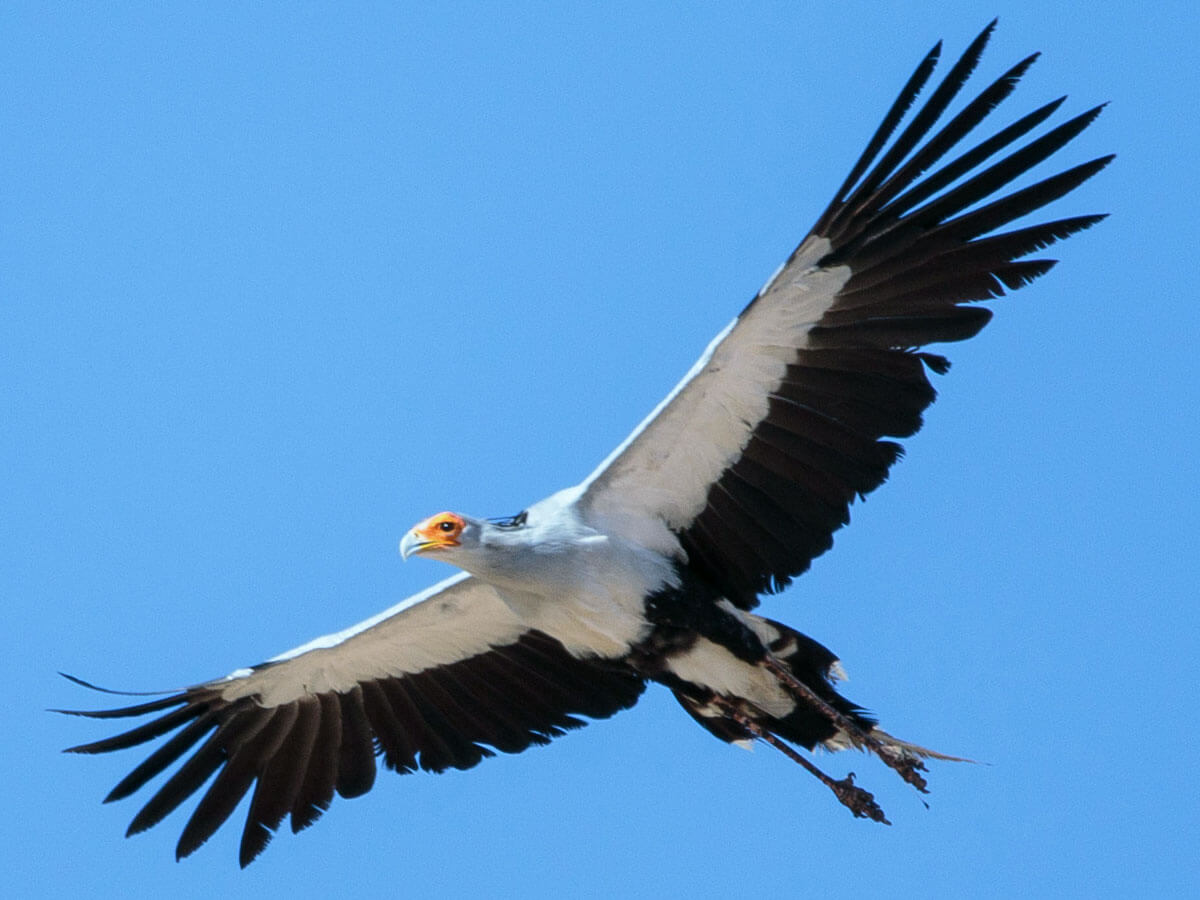
10. Conservation Status
According to the International Union for the Conservation of Nature ( IUCN Redlist ), the secretary bird is listed as Endangered. It is estimated that there are less than 70,000 mature individuals in the protected areas and the population is decreasing.
Conservation efforts to protect the savannah and grassland ecosystems are underway in many African countries and this should help prevent the extinction of the secretary bird. Issues like a shrinking habitat, political instability and climate change make this conservation work more challenging.
Closing Thoughts
When you think of the secretary bird, it is hard not to think of the Okapi that lives deep in the forests of the Democratic Republic of Congo. The Okapi looks like the cross-breeding of a giraffe and a zebra, while the secretary bird looks like the result of cross-breeding between an eagle and a crane.
Beyond its captivating looks, the secretary bird is an important part of the ecosystem and plays its role in maintaining the delicate balance of the African savannah.
Whether you go on safari to see birds or the classic wildlife like the BIG FIVE, the secretary bird will be a joy to come across. Your contribution will go toward making sure that these wild and protected areas are properly conserved for the future.
